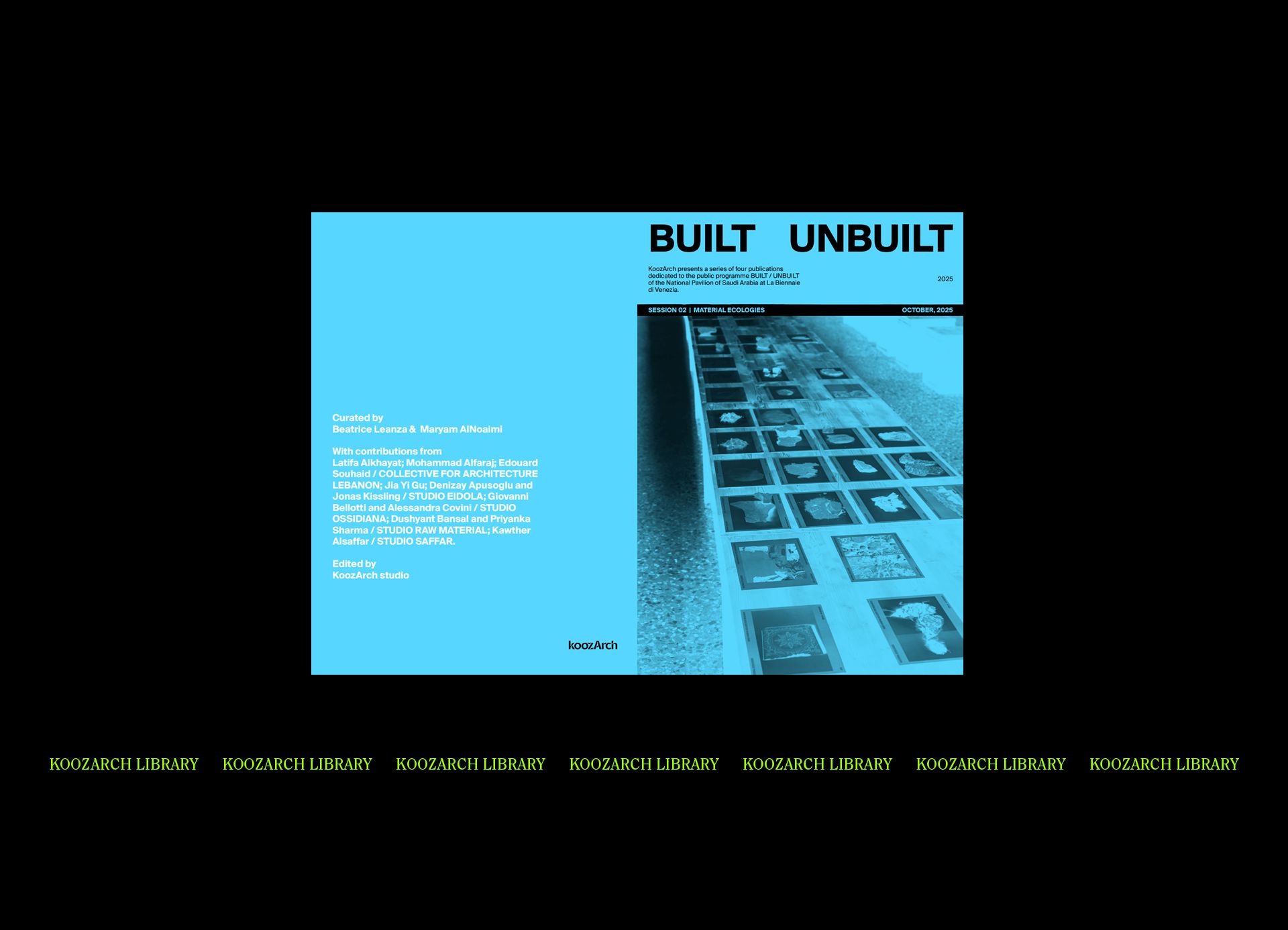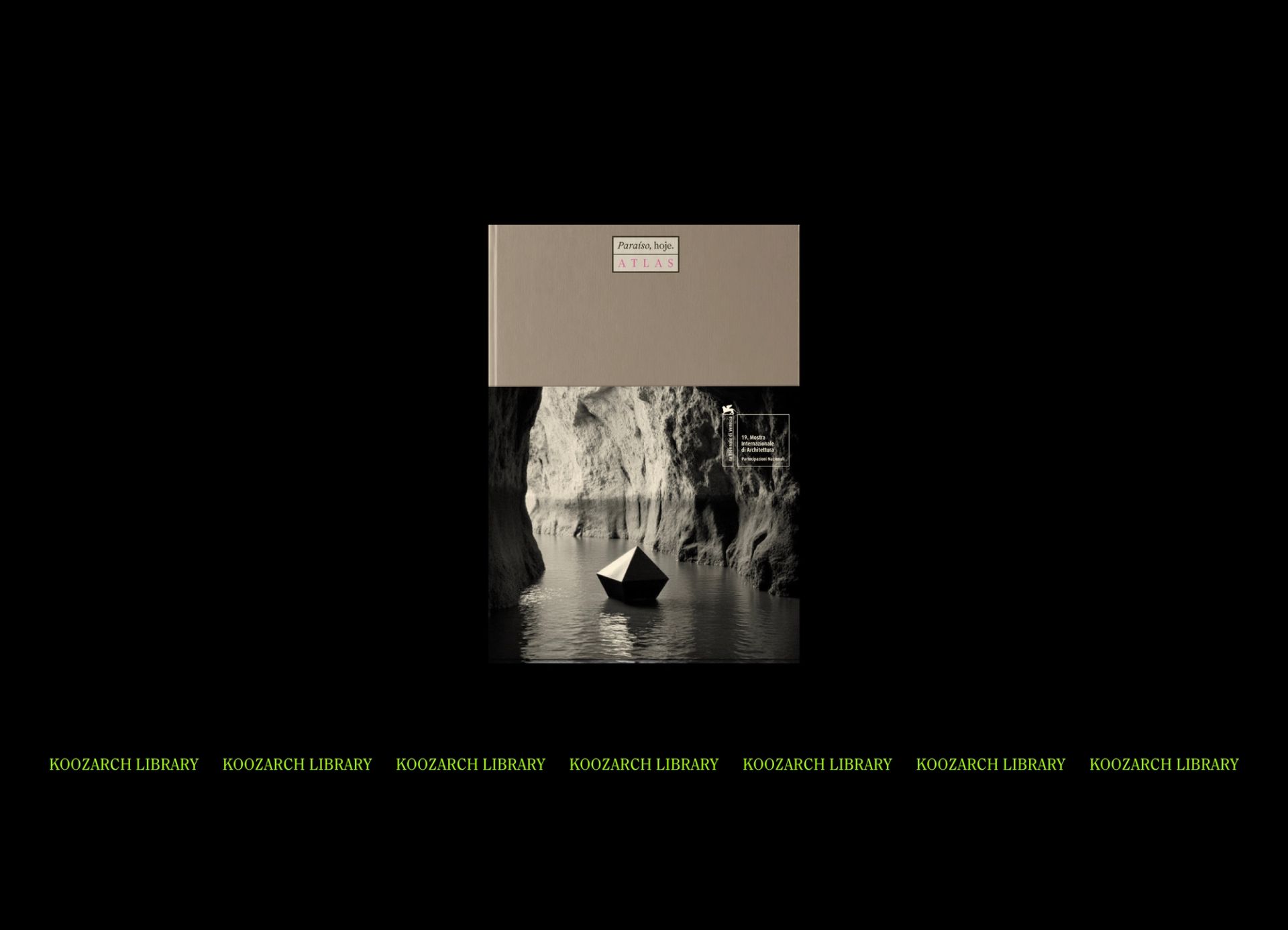A research-based exhibition about the artificially altered settlement in the Dusheti region of Georgia, january, february march is a project that symbolically focuses on reservoirs, their creation, and their impact on ecological, urban, and demographic shifts in the age of rapid political transformations and climate change, exploring the relationship between the flow of time and energy. How temporary is our footprint on the environment? Can we analyse the water as a determinant of order? What type of flows do we speak of when we mention the flows of energy, migration, time, and the outflow of the landscape itself? In this interview with Tinatin Gurgenidze, curator of the pavilion together with Gigi Shukakidze and Otar Nemsadze, we talk about colonialism and extraction, the impact of Soviet era infrastructure in today’s Georgian economy and how resistance to privatisation of water can translate into equitable futures.
This interview is part of KoozArch's focus dedicated to Biennale Architettura 2023 - 18th International Architecture Exhibition The Laboratory of the Future, curated by Lesley Lokko and organised by La Biennale di Venezia. The International Exhibition is open in Venice from May 20 to November 26.
KOOZ january february march represents dead and living nature through the story of an artificially altered settlement in the Dusheti region of Georgia. What prompted the project? How does the latter relate to Lesley Lokko’s curatorial theme on The Laboratory of the Future?
TINATIN GURGENIDZE The main idea of this work is inspired by the artefacts discovered during the research found in the black sludge on the territory of the dried-out artificial lake Zhinvali. The project attempts to reconstruct the spatial memory of the area through primitive archetypes—a city, a house, a church. The intersection of living and lifeless landscapes—formed around the dried-up rivers—metaphorically connects to a sunken abstract form composed of sedimented sludge material. The curatorial concept focuses on the consequences of the plant's development, which led to the flooding of the village of Zhinvali and the alteration of the local ecosystem. The project uses the juxtaposition of dead and living nature representations to tell the story of this artificially altered settlement. Lesley Lokko's The Laboratory of the Future relates to this project by examining the impact of human interventions on the environment and the temporal aspects of such interventions.
The intersection of living and lifeless landscapes—formed around the dried-up rivers—metaphorically connects to a sunken abstract form composed of sedimented sludge material.
Moreover, the topics discussed at the leading exhibition, like colonialism and the exploitation of natural resources, are at the heart of the project at this year's Georgian pavilion. The Georgian pavilion offers and focuses on the region of the South Caucasus through the lens of critically discussing the countries' colonialist and extractivist past and present. The project was prompted by exploring the relationship between the flow of time and energy, specifically in the context of the hydroelectric power station Zhinvali in the Dusheti region of Georgia.
KOOZ In 1920, the science fiction writer H.G. Wells, following a visit to Russia, wrote about how Lenin had finally succumbed to the “electricians” Utopia, having the decaying railways replaced by a new electric transport with the ambition of electrifying the entire country. How did that project prioritise specific regions over others? What were the consequences / implications of this for Georgia?
TG The GOELRO plan commissioned by Lenin, implemented in the early Soviet Union, prioritised specific regions for the electrification project based on the existing infrastructure, resources and strategic considerations. Georgia received fewer resources compared to economically advanced areas. This led to a limited number of power plants and lower installed capacity in Georgia. Rioni HPP and Zemo Avchala HPP were constructed in Georgia under GOELRO. Critics found the plan inefficient and criticised its focus on large power plants. It is worth noting that the GOELRO plan faced criticism from both the right and left perspectives. Critics on the right considered the plan inefficient and overly optimistic, while leftists found it too centralised and insufficiently ambitious regarding social transformation. The project was criticised for directing most resources toward constructing large power plants, resulting in uneven economic growth and limited industrialization. As a result, GOELRO was gradually abandoned and replaced as political and economic conditions changed and new environmental policies emerged in the Soviet Union. More information about this project can be found in our publication january february march (Tbilisi: Tbilisi Architecture Biennial, 2023), as part as an article by Giorgi Tsintsadze titled The Boom and Bust of Hydropower in Soviet Georgia.
The importance of preserving the river's flow, rejecting its monetization or privatisation, and involving the local communities in its care and benefits.
KOOZ At present, more than 80 hydropower plants (HPPs) supply electricity to the energy system of Georgia, with another 200 being preliminary agreed to. According to what parameters are HPPs location, scale and operations evaluated? How transparent are the legislative norms for planning the construction of these plants?
TG The location, scale, and operations of Georgia hydropower plants (HPPs) should be evaluated based on various parameters. The exact parameters may vary, but they typically include factors such as the availability and potential of water resources, environmental impact assessments, feasibility studies, economic viability, technical considerations, and social impact assessments. Unfortunately, in Georgia, the primary role for planning and constructing the HHP´s is measured by its financial value, and in many cases, the aspects mentioned above are not being taken into consideration.
Regarding the transparency of legislative norms for planning the construction of HPPs, there have been many concerns about the need for more transparency. One of the recent movements to defend the Rioni Valley from the construction of the Namakhvani HPP raised questions about who benefits from transforming nature into a tradable commodity and who bears the costs when such projects lead to negative consequences. The movement emphasised the importance of preserving the river's flow, rejecting its monetisation or privatisation, and involving the local communities in its care and benefits.
However, resistance to hydropower projects has also emerged and the protest continues, highlighting the contested nature of these projects.
The Georgian government and international actors, such as the European Union and European development banks, have supported the utilisation of hydropower resources as part of "green energy transitions." However, resistance to hydropower projects has also emerged and the protest continues, highlighting the contested nature of these projects.
KOOZ The Soviet HPP projects “have been revived in post-Soviet Georgia as investment opportunities designed to attract foreign capital to independent Georgia.” How has the energy crises and need for diversifying energy sources away from Russia exacerbated this situation? To what extent is the declared “energy independence from Russia” a true goal considering that major hydropower plants are owned by subsidiaries of the Russian state or Russian business? What role does the European Union and Commission play within this matrix?
TG The energy crises and the need to diversify energy sources away from Russia have revived Soviet hydropower projects in post-Soviet Georgia as investment opportunities. However, this raises questions about the extent of true energy independence from Russia when subsidiaries of the Russian state or Russian businesses own major hydropower plants.
Despite the goal of achieving energy independence from Russia, major hydropower plants in Georgia are owned by Russian state companies or businessmen. It is important to understand that in terms of resources, we are not dependent on Russia; the problem lies in the private ownership of our resources which are owned mainly by Russian companies. This raises doubts about the true extent of energy independence. The European Union has supported Georgia's efforts to enhance energy security and diversify energy sources and has also played an essential role in raising awareness about the importance of the topic in the country.
The energy crises and the need to diversify energy sources away from Russia have revived Soviet hydropower projects in post-Soviet Georgia as investment opportunities.
KOOZ In the coming years, Georgia is set to experience a substantial rise in domestic energy demand whilst the climate crisis will evermore affect the reliability of hydropower generation. How can Georgia retain its independence as a nation and move away from the extractivist regime which characterises its energy sector?
TG Georgia can pursue several strategies to retain independence and shift away from an extractivist energy regime. Firstly, diversify the economy and prioritise sustainable development to reduce reliance on mining and extractive industries. Secondly, explore alternative energy sources like solar and wind power to mitigate rising energy demand and climate impacts on hydropower. Thirdly, review policies on natural resource extraction to ensure sustainable management and fair benefits for the nation. Fourthly, develop non-extractive sectors such as technology, manufacturing, and services to create more stable employment and reduce vulnerability to commodity market fluctuations. Prioritise citizen well-being and environmental protection by evaluating significant projects, promoting transparency, and encouraging public participation. Georgia's path to independence and a sustainable energy sector involves economic diversification, exploring renewables, revisiting extraction policies, and prioritising sustainable development.
Georgia's path to independence and a sustainable energy sector involves economic diversification, exploring renewables, revisiting extraction policies, and prioritising sustainable development.
KOOZ What does the future look like from the Georgian participation in the Venice Biennale? How can we, as planetary citizens, claim our right for the commonality and democratisation of the use and transformation of natural resources?
TG The future of Georgian participation in the Venice Architecture Biennale is still being determined. Participating in exhibitions of this kind signifies an opportunity to raise awareness about critical issues like the use and transformation of natural resources or other crucial topics concerning countries' architecture and urban environments. As planetary citizens, we need to promote transparency, accountability, and sustainable development to claim our right to the commonality and democratisation of natural resource use and transformation. This involves encouraging disclosure of information by governments and corporations, adopting practices that minimise negative impacts and maximise long-term benefits, raising awareness through public discourse, and supporting renewable energy and conservation efforts. Active participation in these endeavours will contribute to a more sustainable and equitable future for all. Moreover, we must raise awareness in Western societies about the agencies their states are offering to the countries in the Global South. And finally, bringing our region into the international discourse about the global south and decolonization is crucial.
Bio
Tinatin Gurgenidze is an urban researcher, curator, and author. She lives and works between Tbilisi and Berlin. Tinatin is the author of several publications and projects dealing with urban topics in Tbilisi and other East European cities. Recently she has established an alternative researching and learning project Common Territories. Tinatin is also a co-founder and one of the artistic directors of the Tbilisi Architecture Biennial.
Federica Zambeletti is the founder and managing director of KoozArch. She is an architect, researcher and digital curator whose interests lie at the intersection between art, architecture and regenerative practices. In 2015 Federica founded KoozArch with the ambition of creating a space where to research, explore and discuss architecture beyond the limits of its built form. Parallel to her work at KoozArch, Federica is Architect at the architecture studio UNA and researcher at the non-profit agency for change UNLESS where she is project manager of the research "Antarctic Resolution". Federica is an Architectural Association School of Architecture in London alumni.





